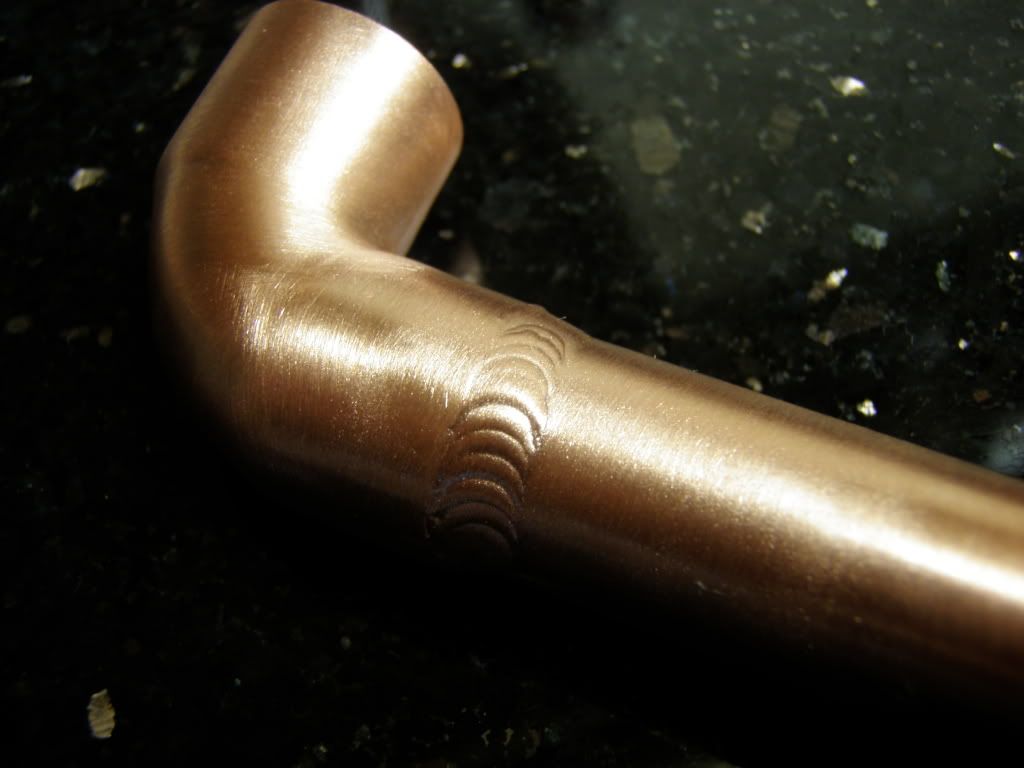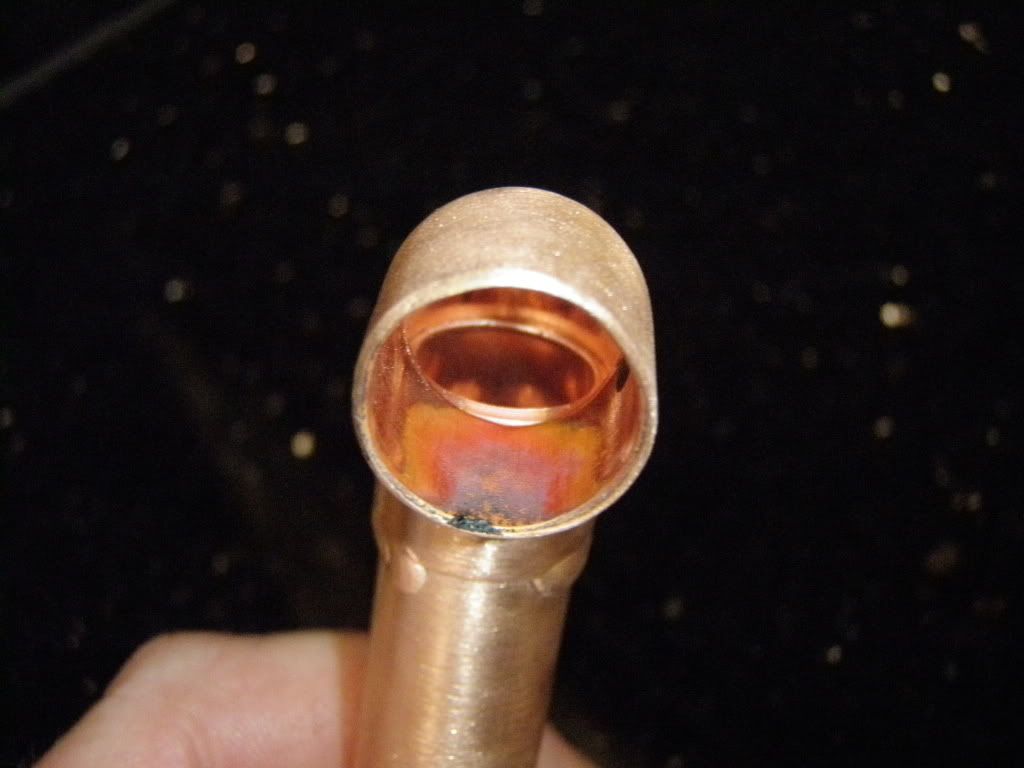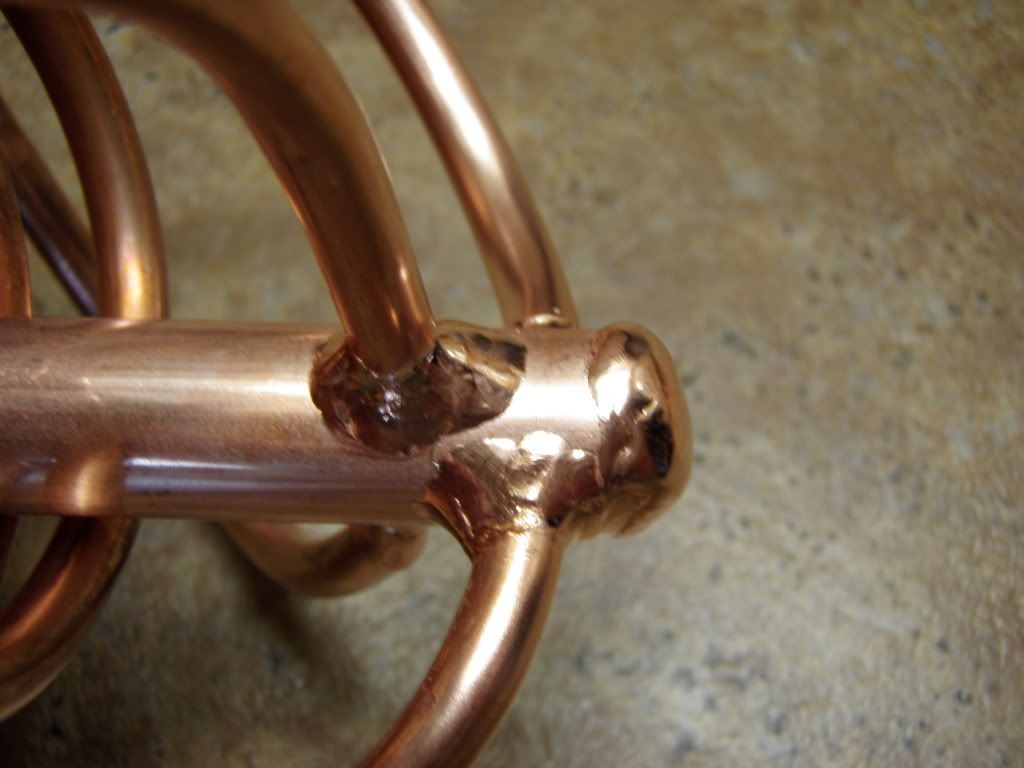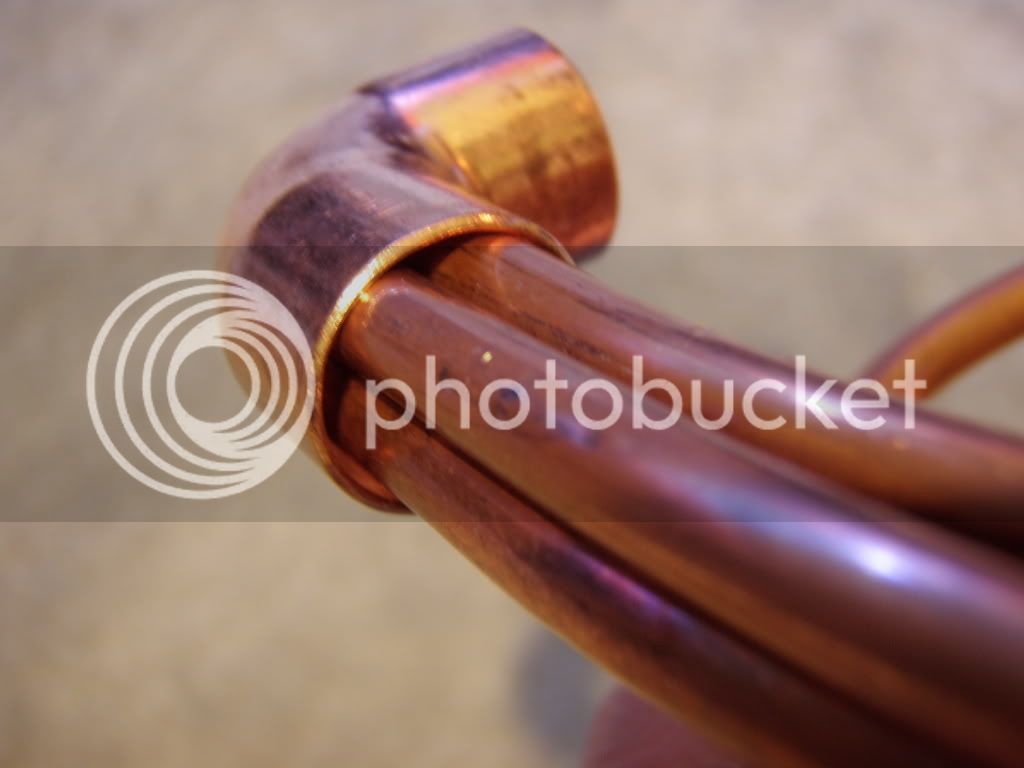GreenMonti
Well-Known Member
- Joined
- Nov 29, 2009
- Messages
- 1,268
- Reaction score
- 67
I thought I would put up my Flash boiler build. After MANY, MANY, Pm's to Kladue. I have started. Thank You Kevin for all you have done!
So I have built mine around Klaude's design. I am using copper tubing on mine instead of the SS. I bought a 50' roll of 1/4" copper tubing and cut 4 12'4" lengths. I wrapped the lengthes around a 2" PVC pipe to get nice tight wound coils. Keeping them on the pipe I spread them out to get about 1" of spacing inbetween the coils. I am using 1/2" type L as the center tube for the inlet water. I didn't take pics of the coils while they were seperate. Sorry.
Here is a pic of it as it is now.
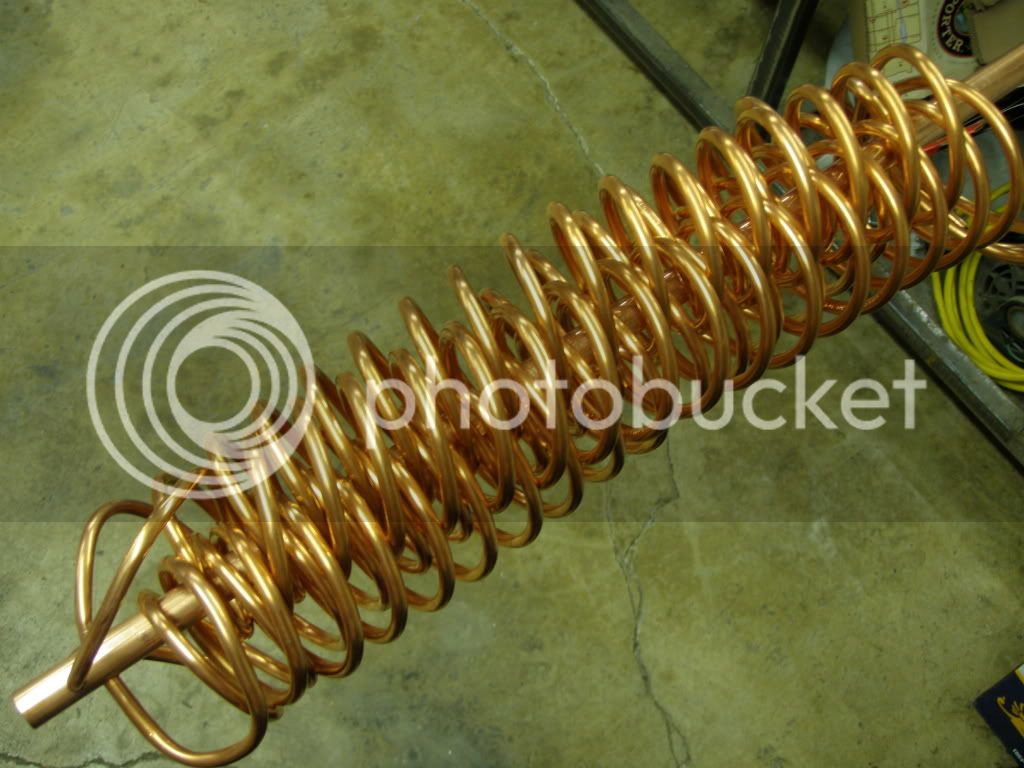
I have decided to weld in the tubes at the bottom, because I don't really trust solder and because I am able to weld them. Kladue used compression fittings on his. I like the use of compression fittings very much so. I am just trying something different as well as I am not to sure of the brass compression fittings being able to hold up. So, I drilled holes in the bottom of the 1/2" pipe to allow the 1/4" tubes to go into it. Here are a couple of shots of that.
Reminds me of the base of a x-mas tree.
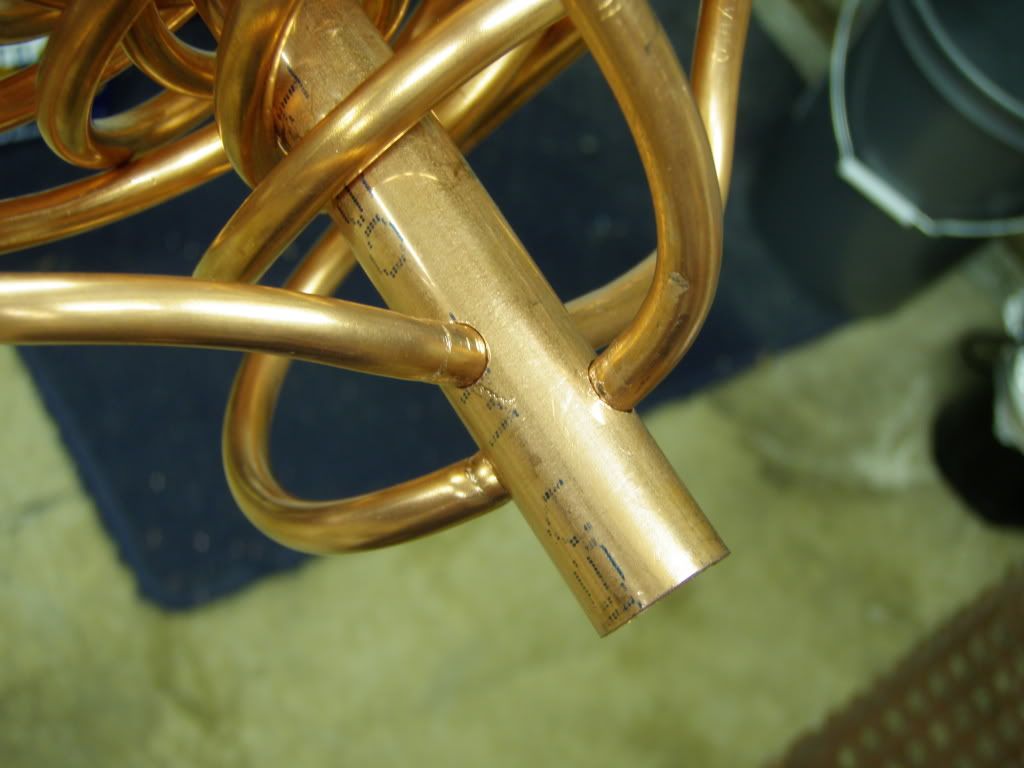
The inside.
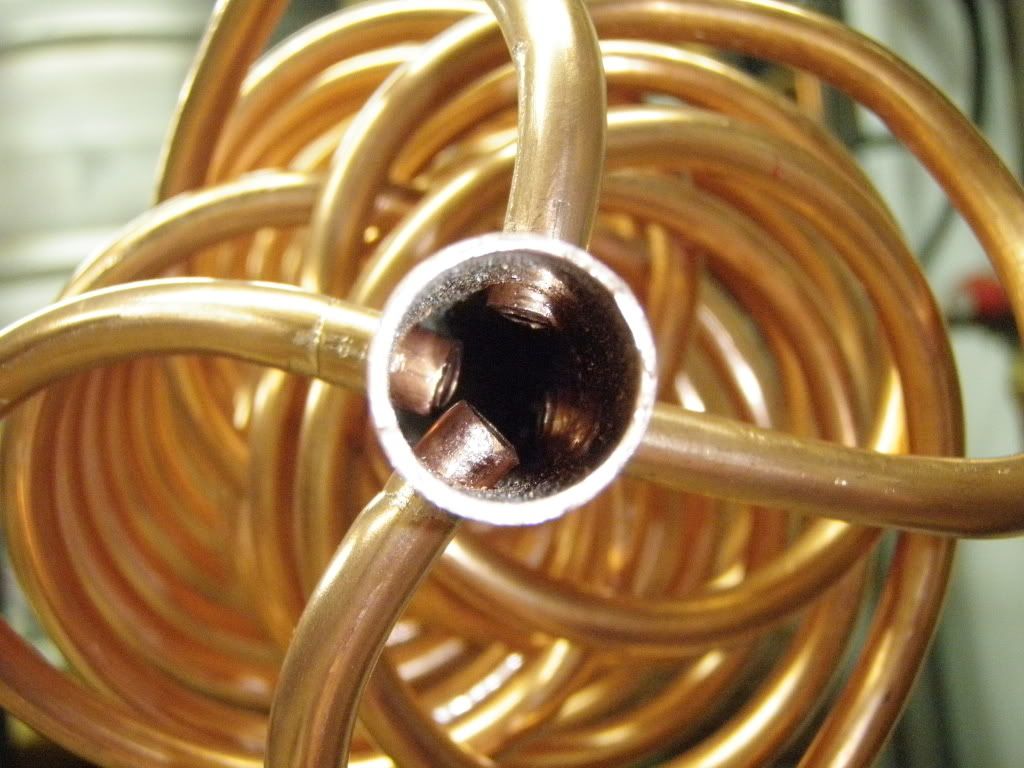
That's it for now. I am doing a test weld tomorrow with a couple of different filler wires. I have welded copper before with no issues, I am just playing with different stuff. Stainless filler, or Silicone bronze.....
Any thoughts or suggestions are welcome. Prost.
So I have built mine around Klaude's design. I am using copper tubing on mine instead of the SS. I bought a 50' roll of 1/4" copper tubing and cut 4 12'4" lengths. I wrapped the lengthes around a 2" PVC pipe to get nice tight wound coils. Keeping them on the pipe I spread them out to get about 1" of spacing inbetween the coils. I am using 1/2" type L as the center tube for the inlet water. I didn't take pics of the coils while they were seperate. Sorry.
Here is a pic of it as it is now.

I have decided to weld in the tubes at the bottom, because I don't really trust solder and because I am able to weld them. Kladue used compression fittings on his. I like the use of compression fittings very much so. I am just trying something different as well as I am not to sure of the brass compression fittings being able to hold up. So, I drilled holes in the bottom of the 1/2" pipe to allow the 1/4" tubes to go into it. Here are a couple of shots of that.
Reminds me of the base of a x-mas tree.

The inside.

That's it for now. I am doing a test weld tomorrow with a couple of different filler wires. I have welded copper before with no issues, I am just playing with different stuff. Stainless filler, or Silicone bronze.....
Any thoughts or suggestions are welcome. Prost.



